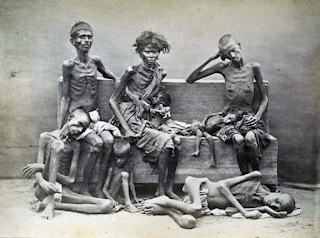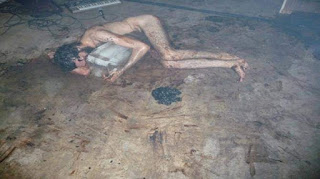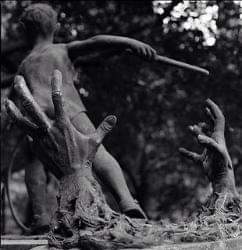The Top 6 Deadliest Genocides.
The Top 6 Deadliest Genocides.
Throughout human history, there have been several terrible genocides where millions of people lost their lives. These genocides were carried out with deliberate and systematic violence, targeting specific groups based on their ethnicity, religion, or politics. Even though these events are very dark, it’s important to talk about them so that we can prevent them from happening again.
The top 7 deadliest genocides in history have left a lasting impact on the world and are still studied, discussed, and debated by historians and scholars today. From the Holocaust, which claimed the lives of 6 million Jews, to the Bengali Genocide, which resulted in the deaths of 3 million people, each of these genocides represents a harrowing chapter in human history. Here, we will examine the shocking reality of the top 7 deadliest genocides that shook the world to its core.
1 Moriori massacre
The Moriori people were the indigenous inhabitants of the Chatham Islands, a small archipelago located about 800 kilometers east of New Zealand. The Moriori were a peaceful and communal people who had lived on the islands for hundreds of years, developing a unique culture and way of life.
In 1835, a group of about 900 Maori warriors from mainland New Zealand arrived on the Chatham Islands, seeking new territory and resources. Upon their arrival, the Maori began a violent campaign against the Moriori, attacking their villages, killing their people, and enslaving survivors. This period of violence, known as the Moriori massacre, lasted for several months, resulting in the deaths of approximately 300 to 1,000 Moriori, nearly 90% of their population.
The Maori warriors who carried out the massacre saw the Moriori as an inferior race and believed they had a right to conquer their land and resources. The Moriori, who had no tradition of warfare and were caught off guard by the Maori’s arrival, were unable to effectively defend themselves. Many were killed, while others were forced into slavery and forced labor on Maori farms and settlements.
The Moriori massacre had a profound impact on the Moriori people, their culture, and their way of life. The survivors of the massacre were traumatized and stripped of their land, homes, and way of life. Many were forced to assimilate into Maori culture and lost their unique identity and traditions.
2 Kurdish Genocide.
The Kurdish Genocide was a brutal series of events that took place in Iraq in the late 1980s. The goal was to wipe out the Kurdish population in Iraq, and it resulted in the deaths of an estimated 50,000 to 100,000 Kurdish people.
The Iraqi government, under the leadership of Saddam Hussein. This began attacking the Kurdish population in the 1960s. The Kurds wanted autonomy and political rights, which threatened the Iraqi government’s control. The government responded with military force, including chemical weapons, forced displacement, and mass killings.
The most infamous incident of the Kurdish Genocide was the Anfal campaign in 1988. The campaign aimed to destroy Kurdish resistance by killing civilians, using chemical weapons, and wiping out entire villages. During the campaign, up to 100,000 Kurdish people were killed, and many more were forced to flee their homes.
3 Darfur Genocide
The Darfur Genocide was a devastating event that took place in Sudan in the early 2000s. It resulted from a long-standing conflict between the government and rebel groups, leading to the killing and displacement of thousands of people.
The conflict began when Darfur rebels started fighting against the government, accusing it of neglecting the region. In response, the government armed Arab militias, known as the Janjaweed, to crush the rebellion. The Janjaweed began attacking villages, killing innocent people, and destroying property, leading to the escalation of a full-scale genocide.
The Janjaweed targeted specific ethnic groups, including the Fur, Massalit, and Zaghawa peoples, killing men, women, and children, and burning their homes. Women and girls were also often raped and taken as slaves. The Darfur Genocide resulted in an estimated 300,000 deaths and the displacement of millions of people. Although the violence has reduced in recent years, the region still faces significant challenges in rebuilding and addressing the ongoing humanitarian crisis.
The United Nations recognized the Darfur Genocide as a genocide in 2005, and the International Criminal Court has indicted several individuals for their involvement in the atrocities. However, many victims still await justice, and the effects of the conflict continue to be felt in the region.
4 Rohingya Genocide.
The Rohingya Genocide was a tragic event that took place in Myanmar (formerly Burma) in the late 2010s. The conflict resulted in the killing and displacement of thousands of Rohingya people, who are Muslim minorities in the country. The Rohingya people have faced persecution in Myanmar for decades, with the government refusing to recognize them as citizens and denying them basic rights.
The conflict escalated in 2017 when Rohingya rebels attacked police posts, leading to a brutal crackdown by the Myanmar military. The military targeted Rohingya villages, killing men, women, and children and driving hundreds of thousands of people from their homes. Reports of rape, torture, and other atrocities were widespread, with the United Nations calling it a “textbook example of ethnic cleansing.”
The Rohingya Genocide resulted in the deaths of an estimated 10,000 people and the displacement of hundreds of thousands more. Although the violence has subsided in recent years, the Rohingya people continue to face significant challenges, including limited access to basic services and ongoing discrimination.
5 Cambodian Genocide.
The Cambodian Genocide was a horrific event that took place in Cambodia in the 1970s. It was a conflict between the Khmer Rouge, a communist group led by Pol Pot, and the Cambodian government, which resulted in the deaths of approximately two million people.
1975/04/17: The Fall of Phnom Penh to the Khmer Rouge on April 17, 1975. As the Khmer Rouge guerrilla are entering the city, calls are made to collect and put in piles of guns at the crossroads and for the citizen to leave the city. Amid cheering from some youths the first guerrilla is posing for pictures.
The Khmer Rouge aimed to create a society based on its interpretation of communist principles. They targeted groups they considered “enemies,” including ethnic minorities, intellectuals, and people connected to the previous government. They forced people to work in labor camps under brutal conditions, leading to many deaths from starvation, exhaustion, and disease.
The Khmer Rouge also carried out mass killings and executions, often using crude weapons such as hammers and bamboo sticks. They targeted entire families, including women and children. The atrocities were intended to instill fear and control the population. The Cambodian Genocide ended in 1979 when Vietnamese forces overthrew the Khmer Rouge regime. Although the Khmer Rouge leaders were later brought to trial, many victims are still waiting for justice.
6 Holodomor Genocide.
The Holodomor Genocide was a famine that occurred in Soviet Ukraine in 1932 and 1933. Resulting in the deaths of approximately 3.9 million people. The famine was deliberately caused by the Soviet government’s policies, including the forced collectivization of farms and the seizure of grain and food.
The Soviet government refused to provide aid to Ukraine, despite requests from Ukrainian officials and continued to take food from the region. Reports indicate that the government deliberately suppressed information about the famine and prevented aid from reaching those in need.
The Holodomor Genocide was an attempt by the Soviet government to assert control over Ukraine and crush resistance to collectivization. The famine had a profound impact on Ukrainian society. This led to the deaths of entire villages and families.
































Comments
Post a Comment